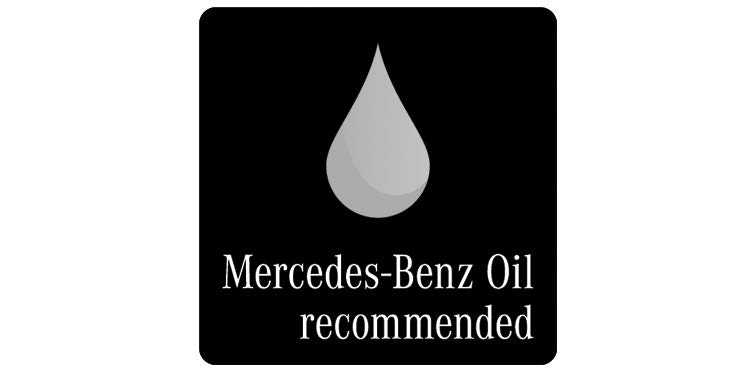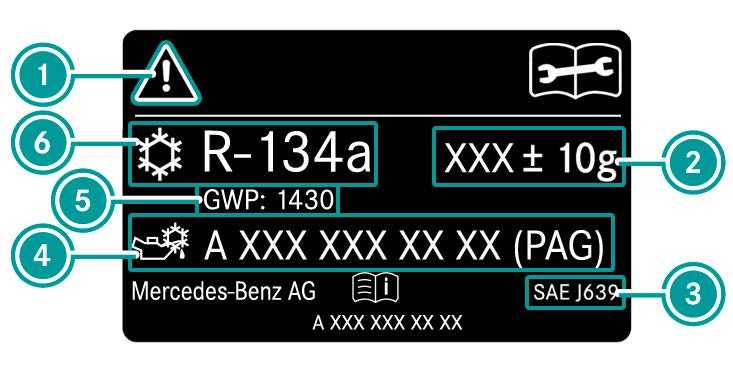Mercedes-Benz E-CLASS SEDAN 2023 Engine Oil
The 2023 Mercedes-Benz E-Class Sedan’s engine oil is essential to preserving the longevity and performance of the car. It is strongly advised for this model to use premium synthetic oil that complies with Mercedes-Benz requirements to maintain engine health. Typically, the manufacturer recommends changing the oil every 10,000 miles or once a year to maintain engine efficiency, prevent damage, and handle warranty concerns. Important factors for owners to think about include oil type, capacity, viscosity grade, and following brand recommendations. The car might also have an oil life monitoring system, which would notify drivers when an oil change is due and highlight how crucial routine maintenance is to maintaining the E-Class Sedan’s advanced engineering.
2023 Mercedes Benz E-Class Specs, Price, Features, Mileage (Brochure)
Engine Oil
Notes on Engine Oil
Observe the notes on operating fluids.

NOTE
Engine damage caused by an incorrect oil filter, incorrect oil or additives
- Do not use engine oils or oil filters other than those which meet the specifications necessary for the prescribed service intervals.
- Do not alter the engine oil or oil filter to achieve longer change intervals than prescribed.
- Do not use additives.
- Have the engine oil changed after the prescribed intervals?
Mercedes-Benz recommends having the oil changed at a qualified specialist workshop. Only use engine oils approved for your vehicle by Mercedes-Benz
Engine oil quality and filling capacity
Engine oil specification
| Model | MB-Freigabe or MB- Approval |
| All models |
229.51, 229.52, 229.61, 229.71, 229.721) |
| 1) Recommended for the lowest possible fuel consumption (lowest SAE viscosity class in each case; observe possible restrictions of the approved SAE viscosity classes) | |
To achieve the lowest possible fuel consumption, it is recommended to use the engine oil specifications marked in the table with the lowest SAE viscosity class. Observe any possible restrictions of the approved SAE viscosity classes.
Engine oil filling capacity
| Model Capacity | |
| E 350 | 7.0 US qt (6.6 liters) |
| E 350 4MATIC | 6.3 US qt (6.0 liters) |
| E 450 4MATIC | 9.0 US qt (8.5 liters) |
The specified filling capacity refers to an oil change with the oil filter.
Notes on brake fluid
Risk of an accident due to vapor pockets forming in the brake system The brake fluid constantly absorbs moisture from the air. This lowers the boiling point of the brake fluid. If the boiling point is too low, vapour pockets may form in the brake system when the brakes are applied hard. This causes the braking effect to be impaired.
- Have the brake fluid renewed at the specified intervals?
Have the brake fluid regularly replaced at a qualified specialist workshop. Only use a brake fluid approved by Mercedes-Benz according to MB-Freigabe or MB-Approval 331.0.
Coolant
Notes on coolant
Observe the notes on operating fluids.
WARNING
Risk of fire and injury from antifreeze If antifreeze comes into contact with hot component parts in the engine compartment, it may ignite. Allow the engine to cool down before adding antifreeze.
- Make sure that no antifreeze spills out next to the filler opening.
- Thoroughly clean off any antifreeze from component parts before starting the vehicle.
NOTE Damage caused by incorrect coolant
- Only use coolant that has been premixed with the required antifreeze protection.
Coolant information is available at the following locations:
- In the Mercedes-Benz Specification for Operating Fluids 320.1
- At a qualified specialist workshop
NOTE Overheating at high outside temperatures If an inappropriate coolant is used, the cooling system is not sufficiently protected against overheating and corrosion at high outside temperatures.
- Only use coolant approved for Mercedes-Benz.
- Observe the instructions in the Mercedes-Benz Specifications for Operating Fluids 320.1.
Have the coolant regularly replaced at a qualified specialist workshop.
Proportion of antifreeze concentrate in the cooling system:
- A minimum of 50% (antifreeze protection down to about -35°F (-37°C))
- A maximum of 55% (antifreeze protection down to -49°F (-45°C))
Coolant filling capacity
Engine cooling circuit (filling capacity with heating)
| Model | Capacity |
| E 450 4MATIC | 13.7 US qt (13.0 liters) |
| All other models | 14.8 US qt (14.0 liters) |
Notes on windshield washer fluid
Risk of fire and injury from windshield washer concentrate Windshield washer concentrate is highly flammable. It could ignite if it comes into contact with hot engine parts or the exhaust system.
- Make sure that no windshield washer concentrate spills out next to the filler opening.
NOTE
Damage to the exterior lighting due to unsuitable windshield washer fluid Unsuitable windshield washer fluid may damage the plastic surface of the exterior lighting.
- Only use windshield washer fluid suitable for use on plastic surfaces, e.g. MB SummerFit or MB WinterFit.
NOTE Blocked spray nozzles caused by mixing windshield washer fluids
- Do not mix MB Summer Fit and MB Winter Fit with other windshield washer fluids.
Do not use distilled or deionized water. Otherwise, the fill level sensor may be triggered erroneously.
Recommended windshield washer fluid:
- Above freezing point: e.g. MB SummerFit
- R Below freezing point: e.g. MB WinterFit
For the correct mixing ratio, refer to the information on the antifreeze container. Mix washing water with windshield washer fluid all year round.
Refrigerant
Notes on refrigerant
Observe the notes on operating fluids. NOTE Damage due to incorrect refrigerant
The climate control system may be damaged if a non-approved refrigerant is used.
-
- USA: use only R‑134a refrigerant.
- Canada: use only R‑1234yf refrigerant.
NOTE Damage to the climate control system due to incorrect refrigerant compressor oil
- Only use refrigerant compressor oil that has been approved by Mercedes-Benz.
- Do not mix the approved refrigerant compressor oil with a different one.
Work on the climate control system may be carried out only at a qualified specialist workshop. All applicable regulations as well as SAE standard J639 must be adhered to. The information label for the climate control system regarding the refrigerant type and the refrigerant compressor oil (PAG oil) is located on the inside of the hood.

Information label (example – USA)
- Hazard and service warning symbols
- Refrigerant filling capacity
- Applicable standards
- PAG oil part number
- GWP (global warming potential) of the refrigerant used
- Refrigerant type

Information label (example – Canada)
- Hazard and service warning symbols
- Refrigerant filling capacity
- Applicable standards
- PAG oil part number
- GWP (global warming potential) of the refrigerant used
- Refrigerant type
Symbol 1 indicates the following:
- Possible dangers
- Having maintenance work carried out at a qualified specialist workshop
Filling capacity for refrigerant and PAG oil
Refrigerant filling capacity
| Model | |
| E 450 4MATIC | 21.5 ± 0.4 oz (610 ± 10 g) |
| All other models | 22.2 ± 0.4 oz (630 ± 10 g) |
Filling capacity for PAG oil
| Model | |
| All models |
2.8 ± 0.4 oz (80 ± 10 g) |
Vehicle data
Vehicle dimensions
The heights specified may vary as a result of the following factors:
- Tires
- Load
- Condition of the suspension
- Optional equipment
| All models | |
| Vehicle length | 194.5 in (4940 mm) |
| Vehicle width including exterior mirrors | 81.3 in (2065 mm) |
| Wheelbase | 115.7 in (2939 mm) |
Vehicle height
| Model | Vehicle height |
| E 350 | 57.5 in (1460 mm) |
| All other models | 57.8 in (1467 mm) |
Turning circle
| Model | Turning circle |
| E 350 | 38.1 ft (11.6 m) |
| All other models | 39.0 ft (11.9 m) |
Weights and loads
Note that items of optional equipment increase the curb weight and reduce the payload. Vehicle-specific weight information can be found on the vehicle identification plate.
FAQ
It’s recommended to use a high-quality synthetic oil, typically in line with Mercedes-Benz specifications.
The exact oil capacity can be found in the owner’s manual, but it’s generally around 5 to 8 quarts for engines of this type.
Mercedes-Benz typically recommends oil changes every 10,000 miles or once a year, whichever comes first.
It’s not recommended; synthetic oils are preferred for their performance and compatibility with advanced engine technologies.
Delaying oil changes can lead to engine damage, reduced performance, and potentially void the warranty.
Modern Mercedes-Benz vehicles usually feature an oil life monitoring system to alert when an oil change is needed.
Commonly, a 0W-40 or 5W-30 viscosity grade is recommended, but it’s best to consult the owner’s manual or a dealer.
Mercedes-Benz may recommend certain brands, but it’s more important that the oil meets their specification standards.
It’s generally not recommended to mix oils; always use the same type and grade for top-ups.
Look out for the oil change indicator light, decreased engine performance, or unusual engine noises.
The oil level can typically be checked via the onboard computer or using the dipstick if equipped.
Yes, in extremely cold or hot climates, the recommended oil viscosity might differ.
Properly maintained engine oil can help maintain optimal fuel efficiency.
While DIY is possible, it’s often recommended to have it done at a dealership or qualified service centre for warranty and technical reasons.
Used oil should be disposed of at a recycling centre or a facility that accepts hazardous materials.
Useful Link
View Full User Guide: Mercedes-Benz E-CLASS SEDAN 2023 User Manual
Download Manuals: https://www.mbusa.com/en/owners/manuals
2023 Mercedes Benz E-Class Specs, Price, Features, Mileage (Brochure)


